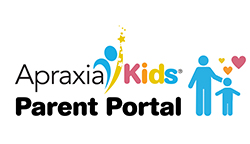Study Tips and Strategies for Kids with Apraxia
- Break it down! A common IEP accommodation for kids with CAS is to chunk assignments and assessments down into smaller sections. You can do the same at home! If they have a study guide, only do one or two sections a night so the overall task of studying is not as overwhelming.
- Use highlighters and colored pens/pencils! Some brains respond well to color, and if your child has trouble recalling information, encourage them to color-code material and highlight key terms and information so it might be easier for them to remember.
- Utilize graphic organizers! If your child struggles with reading, writing or other academic areas, visually representing material either through text or pictures may help them be more successful. This is another common IEP accommodation, so you can work together with your child’s teacher to figure out the graphic organizers that work best for your child and use them both at home and at school.
- Find online study tools! The internet is full of great resources and websites that can help students study. There are websites that create online flash cards, interactive study guides, and study games. Other websites have a library full of engaging quizzes, and you can even create your own quiz to match whatever topic your child is studying.
- Research online accessibility functions! Since many schools have transitioned to using computers and tablets every day, there are numerous tools available that can help your child navigate their device easier. There are google chrome add-ons that can add text-to-speech to your browser, eliminate ads on webpages to decrease distractions, transform website text into a font that is easier to read for kids with dyslexia, and so much more.
- Create a rewards system! If your child is struggling with motivation to study or do their homework, you can create a reward system to get them excited. Simple things like earning a piece of candy or video game time after the required task is completed can make a huge difference. Teachers often use a system like this in school, so talk to your child’s teacher to see if there’s a system they use that can be carried over to your home.
- Incorporate their “intelligences” into your study routine! According to Howard Gardner’s Theory of Multiple Intelligences, different children have different “intelligences”. Even though your child may struggle with reading, writing, or math, they may learn best through moving their hands/bodies (kinesthetic learning), through songs and rhythm (musical learning), or even interacting with nature (naturalistic learning). Figure out your child’s intelligences and strengths and incorporate them into their study routine.
- Don’t try to tackle too many things at once! If your child is studying or doing homework, they are most likely directing most of their attention and energy to that task. Even if the task requires speaking, try not to use this time to also practice and correct their speech. That is something they can focus on in a different situation when their attention and energy can be more directed towards their speech.
- Read aloud to your child! It is very common for students with IEPs to have a teacher or an aide read aloud certain tests and assignments to them. This is something you can do at home as well! Unless an assignment is specifically measuring their reading skills, it is helpful to read aloud to your child so that they can demonstrate their knowledge of the topic that is being asked, not just their reading ability.
- Try colored guided reading strips! A colored guided reading strip is a thin, transparent sheet of plastic that you can put over lines of text to help keep your place in a paragraph. They are typically thin enough to fit one line of text. As your child is reading, they can move the strip down so they can follow along in the text and not lose their place. This may help with focus, fluency, and/or comprehension.
